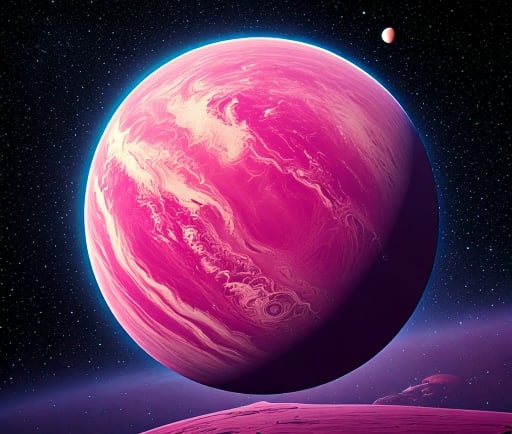GJ 504b: The Pink Planet


Introduction to GJ 504b
In the realm of astronomical discoveries, GJ 504b stands out as a significant milestone. Detected using advanced direct imaging techniques, GJ 504b is recognized as the lowest-mass planet ever identified orbiting a star akin to our Sun. This groundbreaking achievement not only enhances our understanding of planetary formation but also sheds light on the potential for life beyond Earth.
The Significance of Direct Imaging Techniques
Direct imaging has revolutionized the way scientists explore exoplanets. Unlike traditional methods which rely on indirect observations, direct imaging allows astronomers to capture the actual light emitted or reflected by the planet. The discovery of GJ 504b serves as a testament to the efficacy of these techniques. Utilizing specialized instruments, researchers were able to isolate the light from GJ 504b amidst the overwhelming glare of its host star.
Implications of the Discovery
The identification of GJ 504b carries profound implications for the field of astronomy. As the lowest-mass planet detected around a Sun-like star, it challenges existing models of planetary formation and evolution. Its existence suggests that there may be numerous planets with similar characteristics throughout the universe, potentially increasing the likelihood of discovering other Earth-like worlds.
Furthermore, GJ 504b's analysis can provide insights into atmospheres and climate conditions of exoplanets. Understanding the makeup of such celestial bodies can help in the quest to ascertain the conditions conducive to life. Each discovery, including GJ 504b, contributes to the broader narrative of understanding our place in the cosmos.
The Future of Exoplanet Searches
The discovery of GJ 504b encourages astronomers to refine their techniques and technologies to detect even fainter and more distant exoplanets. As advanced telescopes and analytical methods are developed, the future promises further groundbreaking discoveries that will continue to shape our understanding of the universe. The exploration of exoplanets is just beginning, and GJ 504b is a pivotal point in this ongoing adventure.
In conclusion, GJ 504b represents both a remarkable achievement in the study of exoplanets and a source of inspiration for future exploration. As we harness the power of direct imaging techniques, the possibilities for uncovering the secrets of the universe seem limitless. This milestone not only enriches our comprehension of planetary systems but also elevates our aspirations to find life beyond our own solar system.
